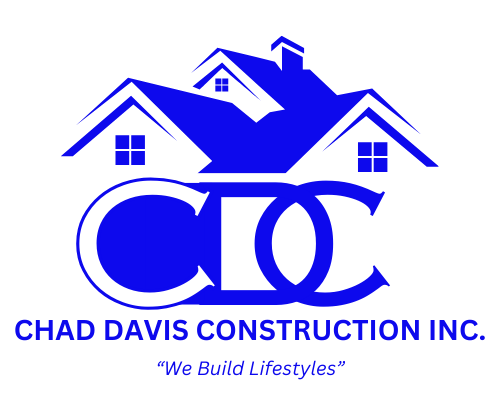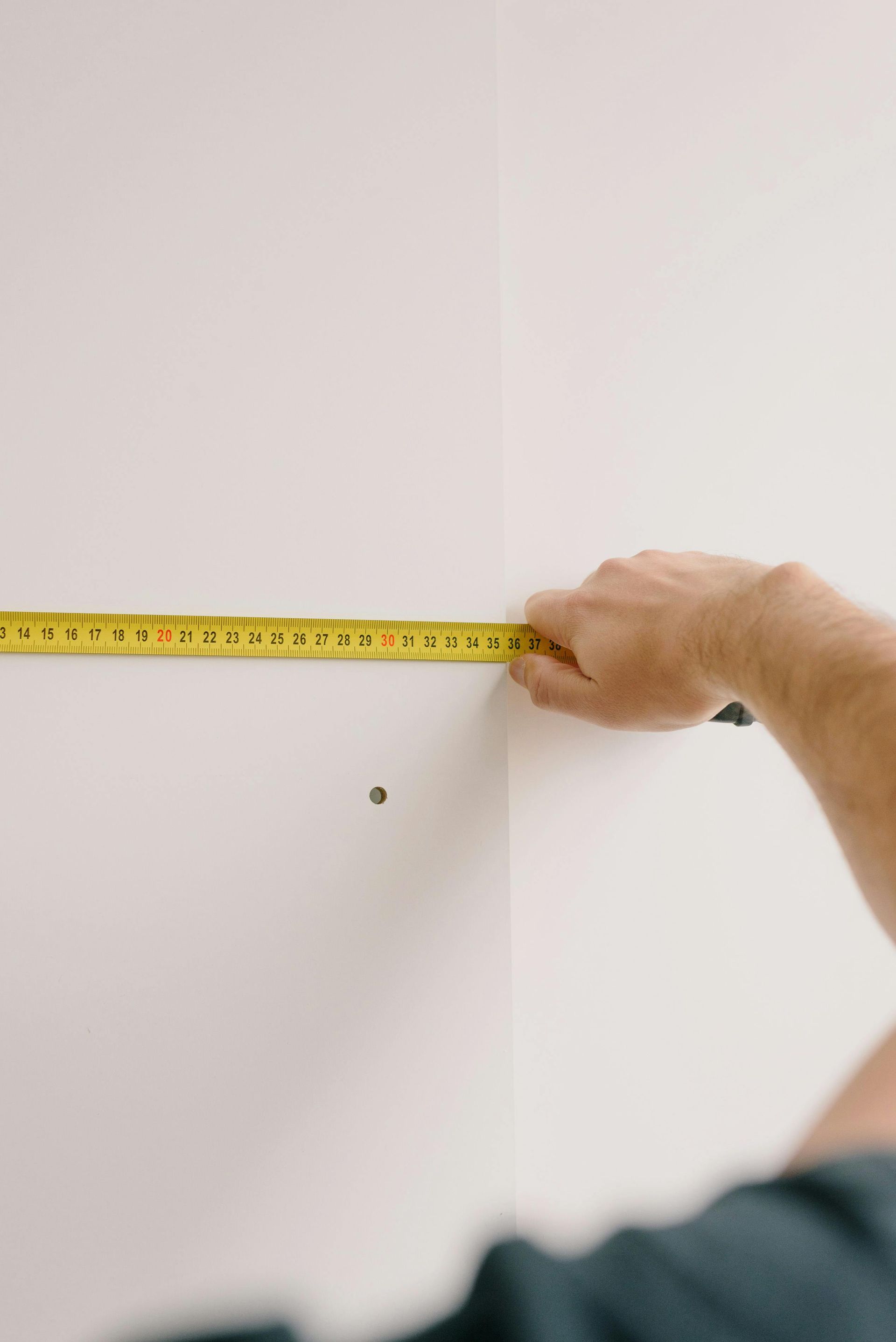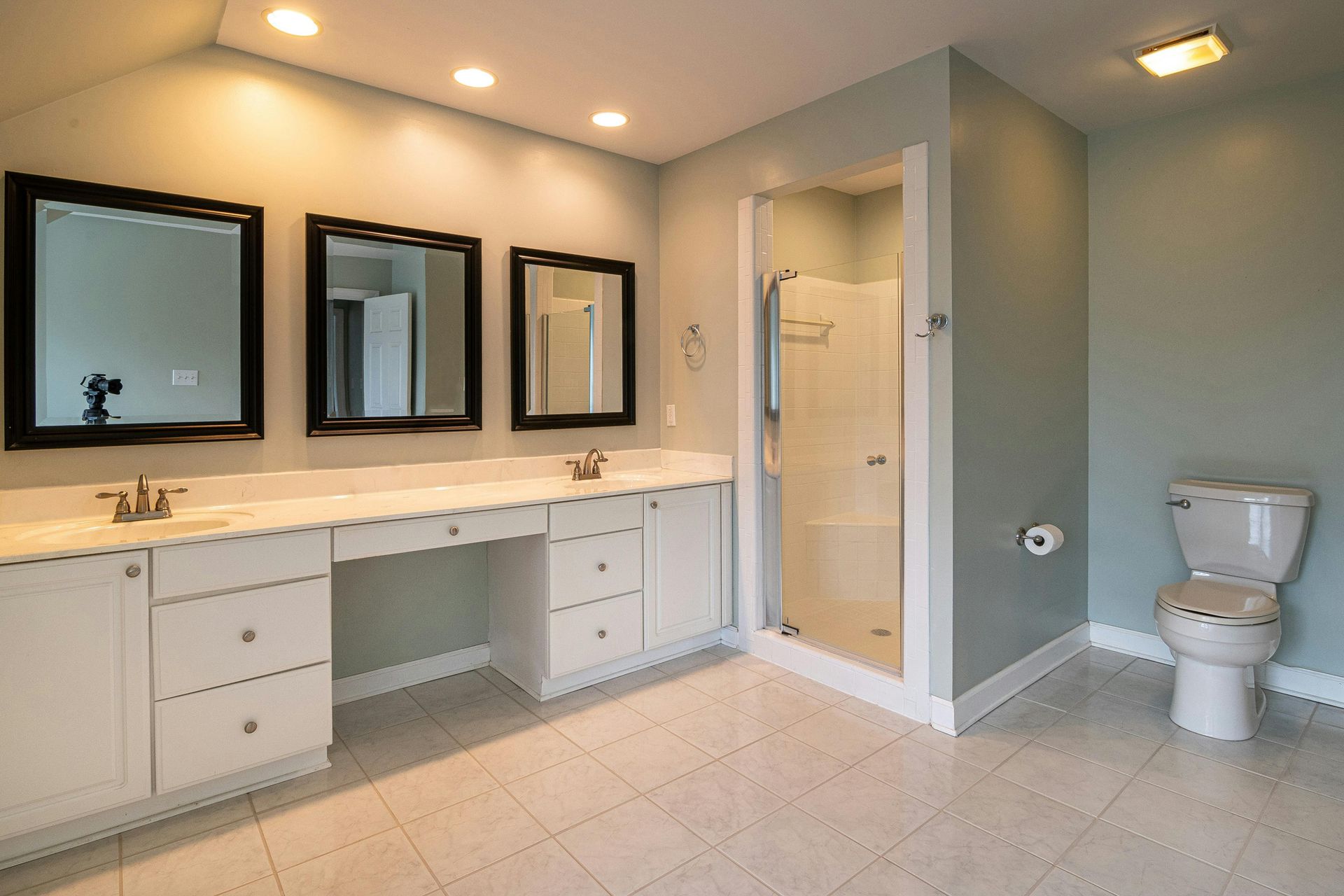Why Spring Home Improvement Starts Earlier Than You Think
This guide explains why January marks the real beginning of spring home improvement season and provides a practical timeline to help you plan your projects for maximum success
Spring home improvement season actually begins long before the first flowers bloom. While most homeowners start thinking about their renovation projects when warmer weather arrives, experienced contractors know that successful spring projects take shape during winter months.
In fact, waiting until spring to start planning your remodeling or home expansion projects could cost you both time and money. Whether you're considering a major construction project or simple updates, starting your preparation in winter gives you significant advantages in contractor availability, material costs, and project timelines.

Looking at your calendar, January might seem too early to think about spring renovations. However, recent industry data shows why starting early is crucial for successful home improvements.
Supply chain considerations have become increasingly critical in construction planning. The National Association of Home Builders reports that more than 90% of builders experienced delays and material shortages in 2021 [1]. Consequently, what previously took six to eight months now requires eight to ten months to complete [1]. Additionally, basic materials like drywall and paint have seen price increases of 7.5% and 14.5% respectively in early 2022 [1].
Here's why getting an early start makes a difference:
- Allows time for material delays and backorders
- Provides flexibility in choosing alternatives if needed
- Helps secure better pricing before spring increases
- Ensures project completion by your desired timeline
Contractor availability windows present another compelling reason for January planning. Throughout winter months, contractors typically maintain lighter workloads [2], making it easier to secure their services. Furthermore, with fewer projects running simultaneously, contractors can dedicate more consistent attention to your renovation [2].
Early bird pricing advantages are particularly significant for budget-conscious homeowners. Specifically, many suppliers offer discounts during slower winter months to clear inventory [3]. Moreover, construction costs tend to rise as demand increases during spring and summer [2]. By securing your contracts early, you can lock in lower rates and potentially avoid inflated pricing that comes with peak season demand.
The construction industry has seen unprecedented changes in material availability and pricing. Basic construction supplies, including windows, appliances, and lumber, are experiencing significant delays [1]. Planning ahead gives you the flexibility to adapt to these challenges without derailing your project timeline.
Creating Your Pre-Spring Project Timeline
Creating an effective timeline for your spring home improvement projects requires careful planning and strategic organization. Recent data shows that 55% of homeowners engaged in some form of home improvement last year [4], making it crucial to have a structured approach.
Assessment and inspection checklist
Start by conducting a thorough home evaluation. A comprehensive inspection helps identify potential issues and prioritize necessary repairs. Here's what to examine:
- Structural elements and foundation integrity
- Roofing and gutter conditions
- Electrical and plumbing systems
- Windows and door functionality
- Exterior siding and trim
- Interior walls and flooring
Priority-based project scheduling
Certainly, organizing projects based on urgency and importance helps maintain focus. Studies indicate that 80% of homeowners exceed their initial budget by at least $500 [4], therefore proper scheduling becomes essential.
Consider these factors when prioritizing:
- Safety-related repairs
- Weather-dependent projects
- Contractor availability windows
- Material delivery timelines
- Permit processing periods
| Timeline Phase | Budget Allocation | Activities |
|---|---|---|
| Initial Planning | 60% | Materials and labor |
| Contingency | 15% | Unexpected issues |
| Finishing | 25% | Final touches and cleanup |
Budget allocation timeline
Although creating a detailed budget might seem overwhelming, it's vital for project success. Generally, experts recommend setting aside 10-15% of your total budget for unexpected expenses [4].
Accordingly, allocate at least 5 hours per week in the early planning stages [5]. This investment of time helps ensure all details are properly addressed. Nonetheless, remember to maintain flexibility in your schedule, as external factors can affect project timelines.
A well-structured timeline should incorporate permit applications, which typically require about a month for processing [6]. Additionally, factor in time for contractor interviews and material research. Set aside time to review payment methods and establish clear communication protocols with your chosen contractors [5].
Essential Pre-Spring Planning Steps
Successful spring home improvement projects depend heavily on proper preparation and timing. Let's examine the crucial steps you'll need to take for a smooth renovation process.
Material research and ordering
Supply chain data shows significant lead times for various construction materials. Windows currently require approximately 20 weeks for delivery [7], whereas cabinets need 8-14 weeks [7]. Subsequently, here's what you should order first:
| Material | Lead Time |
|---|---|
| Windows | 20 weeks [7] |
| Cabinets | 8-14 weeks [7] |
| Trusses | 8 weeks [7] |
| Blinds | 8 weeks [7] |
| Doors | 5 weeks [7] |
Contractor interview process
Straightaway, begin interviewing potential contractors. Essential questions to ask include:
- Experience and licensing verification
- Insurance coverage details
- Project timeline expectations
- Payment schedule preferences
- Warranty terms
Likewise, request references from at least five previous clients [8]. Soon after, visit ongoing project sites to evaluate their work quality and site management practices. Professional contractors should maintain organized workspaces and demonstrate clear communication protocols [8].
Permit application timing
Permit processing varies based on project scope. Small projects often receive approval within 1-2 days [9], whereas medium-sized renovations typically require 10 business days [9]. Complex projects necessitate multi-department reviews, extending the timeline to approximately 30 days [9].
For larger renovations, expect the following timeline:
- Initial plan review: 28 working days [9]
- Complex project review: 35 days [9]
- Additional revisions: 2-4 weeks if needed [10]
Thereafter, consider working with a permit expeditor to streamline the process [10]. They can help ensure all documentation is complete and accurate, reducing the likelihood of delays or rejections. Remember that incomplete applications often cause significant setbacks in the approval process [11].
Winter Preparation for Spring Projects
Winter's quiet months offer the perfect opportunity to lay the groundwork for your spring home improvement projects. Indeed, data shows that winter remodeling can lead to 15-20% cost savings compared to peak season pricing [1].
Indoor planning and design work
First thing to remember, winter provides ideal conditions for detailed project planning. Studies indicate that contractors experience a significant slowdown during winter months [12], making it easier to:
- Schedule detailed consultations
- Review material samples thoroughly
- Finalize design specifications
- Complete permit paperwork
-
Material storage solutions
Given these points about early preparation, proper storage becomes crucial. Here's a comprehensive guide for protecting your materials:
| Material Type | Storage Requirements | Protection Method |
|---|---|---|
| Wood Products | Climate-controlled | Plastic sheets |
| Paint/Finishes | Above freezing | Indoor storage |
| Tiles/Stone | Dry environment | Raised platforms |
| Metal Items | Moisture-free | Rust inhibitors |
Undoubtedly, storing materials properly now can prevent costly delays later. Research shows that winter's drier air creates optimal conditions for storing construction materials [1].
Early weather preparation strategies
As opposed to waiting for spring, taking advantage of winter months allows for better project organization. Consider these proven strategies:
- Complete indoor upgrades like basement finishing or bathroom renovations [1]
- Focus on energy efficiency improvements [13]
- Schedule outdoor project materials delivery for early spring [14]
- Prepare temporary storage solutions with proper coverage [14]
The data clearly shows that winter provides optimal conditions for indoor improvements, with humidity levels being 30-40% lower than spring months [1]. This creates perfect conditions for paint application and flooring installation [1].
By focusing on indoor planning during winter, you can avoid the springtime contractor rush, which typically sees a 40-50% increase in demand [12]. Additionally, many suppliers offer winter discounts to clear inventory, potentially saving 10-15% on material costs [12].
Remember that proper material storage is essential - studies show that improper winter storage can lead to a 20-25% increase in material waste [1]. By implementing appropriate storage solutions now, you'll be ready to begin construction as soon as weather permits.
Flexible scheduling opportunities
The winter season presents unique advantages for project scheduling. Data shows that permit processing times are typically shorter during off-peak seasons [23], hence allowing for more efficient project planning.
Securing contractors during winter months provides several benefits:
- More dedicated attention to your project [2]
- Greater flexibility in scheduling [2]
- Faster response times for questions and concerns [21]
- Better access to experienced professionals [17]
Namely, by initiating your spring home improvement plans during winter, you gain access to:
- Wider selection of qualified contractors [2]
- Lower price quotes for services [2]
- Extended payment options [21]
- Priority scheduling slots [24]
The data clearly shows that contractors have lighter workloads during winter months [2], allowing them to dedicate more time and attention to each project. This increased availability typically results in faster project completion times and more thorough attention to detail.
For homeowners planning significant renovations, early scheduling can lead to substantial savings. Studies indicate that securing contracts during off-peak seasons can result in 15-20% lower project costs [17]. Additionally, contractors are more likely to offer flexible payment terms and customized solutions during these periods [21].
Conclusion
Starting spring home improvements during winter months proves significantly more beneficial than waiting for warmer weather. Smart homeowners recognize that January marks the ideal time to begin planning, securing better contractor rates and material prices while avoiding the rushed spring season.
Certainly, proper winter preparation leads to smoother project execution. Lower contractor demand during these months allows for detailed planning sessions, thorough material research, and careful storage solutions. These advantages, combined with potential cost savings of 15-20%, make winter the perfect time to lay groundwork for spring renovations.
Above all, success depends on taking action early. Homeowners who start their planning process in winter typically experience shorter wait times, better material availability, and more dedicated contractor attention. Therefore, rather than waiting for spring weather to begin your home improvement journey, use these winter months strategically to ensure your renovation projects stay on schedule and within budget.
Sources Used to Write this Blog:
[1] -
https://www.angi.com/articles/3-home-remodeling-projects-winter.htm
[2] -
https://www.jambuildingandrenovations.com/blogs/planning-your-spring-home-remodeling-projects/
[3] - https://louhandyman.com/winter-is-the-best-time-to-plan-spring-remodel/
[4] -
https://www.commonwealthcontracts.com/guides/home-remodel-checklist
[5] -
https://sweeten.com/renovation-101/reno-101/a-renovation-checklist/
[6] -
https://zandcodesigngroup.com/home-renovation-checklist/
[7] -
https://cardinalhomecenter.com/when-should-i-order-materials-for-my-home/
[8] -
https://tracytesmerremodeling.com/how-to-interview-a-home-remodeling-contractor/
[9] -
https://www.cityofbelvedere.org/question/what-is-the-plan-check-turn-around-time-for-a-building-permit-application/
[10] -
https://barnpros.com/resource-center/permitting-what-to-expect/
[11] -
https://symbium.com/blog/why-do-permit-applications-take-so-long-to-get-approved
[12] -
https://westportmoms.com/dont-let-winter-chill-your-home-renovation-plans/
[13] -
https://homeworlddesign.com/thinking-of-renovating-your-home-in-spring-12-ideas-to-follow/
[14] -
https://h2oc.org/blog/tips-for-spring-home-improvement-projects/
[15] -
https://www.kaplancollectionagency.com/negotiation-advice/how-to-negotiate-with-your-contractor/
[16] -
https://constructestimates.com/how-to-negotiate-with-contractors/
[17] -
https://www.uswindow-door.com/blog/what-is-the-best-season-for-a-home-renovation
[18] -
https://www.knieperteam.com/blog/tips-to-save-money-on-spring-home-renovations/
[19] - https://remodelersadvantage.com/4-benefits-buying-construction-materials-bulk/
[20] -
http://prismlightingproducts.com/2023/11/28/benefits-of-buying-building-materials-in-bulk/
[21] -
https://cutstruct.com/blogs/5-benefits-of-buying-construction-materials-in-bulk-2
[22] -
https://www.nykb.com/blog/why-spring-is-ideal-for-home-renovation-projects/
[23] -
https://winfieldbuilders.com/advantages-of-scheduling-roof-replacement-in-spring/
[24] -
https://benchmarkfcu.org/tips-for-spring-home-improvement-building-home-equity/



